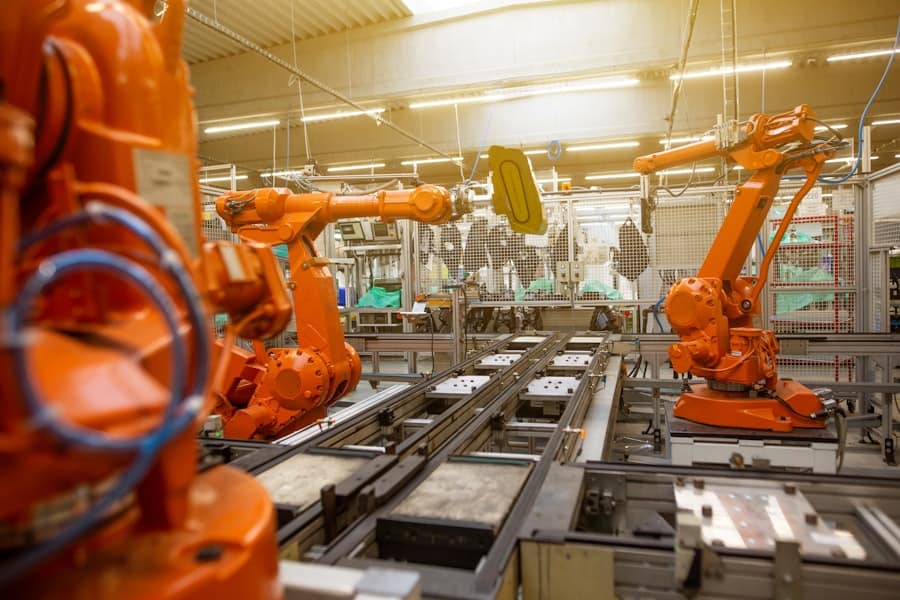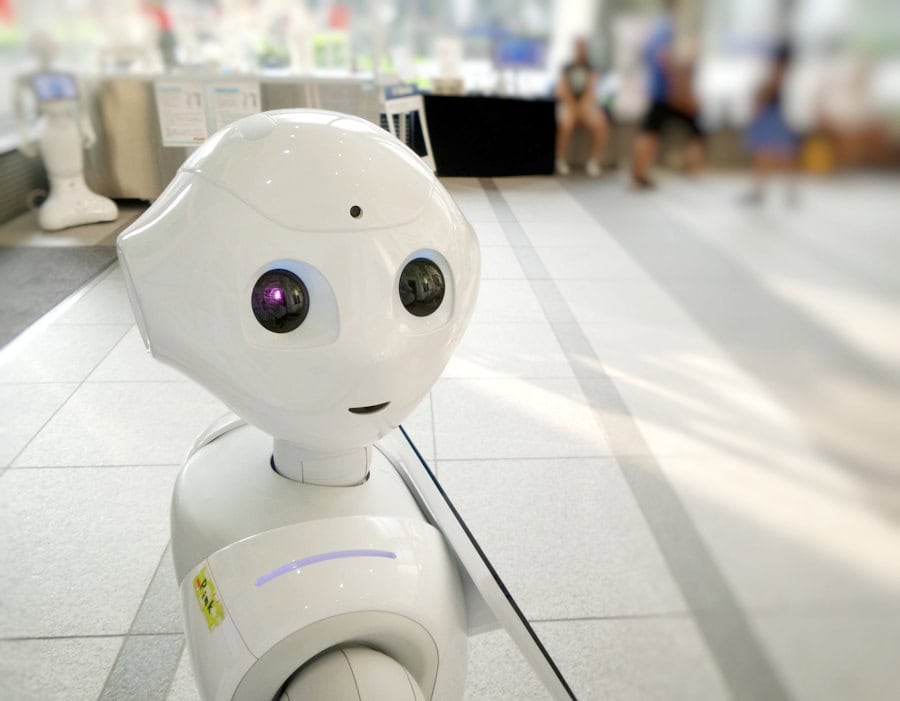Remote monitoring has emerged as a pivotal technology in various sectors, enabling organizations to oversee operations, equipment, and environments from a distance. This capability is particularly crucial in industries where real-time data collection and analysis can significantly enhance decision-making processes. By leveraging advanced technologies such as the Internet of Things (IoT), artificial intelligence (AI), and robotics, businesses can maintain a continuous watch over their assets, ensuring optimal performance and preemptive maintenance.
The evolution of remote monitoring systems has transformed traditional operational paradigms, allowing for greater efficiency and reduced downtime. The significance of remote monitoring extends beyond mere surveillance; it encompasses a comprehensive approach to data management and operational oversight. For instance, in manufacturing, remote monitoring systems can track machinery performance, detect anomalies, and predict failures before they occur.
This proactive stance not only minimizes the risk of costly breakdowns but also enhances overall productivity. As industries increasingly adopt these technologies, the integration of robotics into remote monitoring systems has become a focal point, promising to revolutionize how organizations manage their resources.
Key Takeaways
- Remote monitoring involves the use of technology to monitor and manage equipment and processes from a distance.
- Robotics plays a crucial role in remote monitoring by providing the ability to access and interact with equipment in remote or hazardous environments.
- The advantages of using robotics for remote monitoring include increased safety, efficiency, and accuracy in data collection and analysis.
- Industrial equipment such as pipelines, power plants, and manufacturing machinery can be effectively monitored using robotics.
- Challenges and limitations of robotics in remote monitoring include high initial costs, technical complexity, and the need for skilled operators.
- Case studies demonstrate successful remote monitoring with robotics in industries such as oil and gas, utilities, and healthcare.
- Future trends in robotics for remote monitoring include the use of artificial intelligence, advanced sensors, and autonomous decision-making capabilities.
- In conclusion, implementing robotics in remote monitoring can lead to improved safety, productivity, and cost savings, but careful planning and investment are necessary for successful implementation.
The Role of Robotics in Remote Monitoring
Robotics plays a transformative role in the realm of remote monitoring by providing enhanced capabilities that traditional monitoring systems cannot achieve. Robots equipped with sensors and cameras can traverse environments that may be hazardous or difficult for human operators to access. For example, in the oil and gas industry, robotic systems can inspect pipelines and offshore platforms, gathering critical data while minimizing human exposure to dangerous conditions.
These robots can operate autonomously or be remotely controlled, offering flexibility in how monitoring tasks are executed.
Robots can analyze data on-site and transmit relevant findings back to control centers for further evaluation.
This immediate feedback loop enables organizations to respond swiftly to potential issues, thereby enhancing safety and operational efficiency. The synergy between robotics and remote monitoring not only streamlines processes but also fosters a culture of continuous improvement within organizations.
Advantages of Using Robotics for Remote Monitoring
The advantages of employing robotics in remote monitoring are manifold, significantly impacting operational efficiency and safety. One of the most notable benefits is the ability to conduct inspections in environments that are either too dangerous or impractical for human workers. For instance, in nuclear power plants, robots can perform routine checks on reactors and containment structures without exposing personnel to harmful radiation levels.
This capability not only protects human life but also ensures compliance with stringent safety regulations. Additionally, robotics enhances the accuracy and consistency of monitoring tasks. Unlike human operators who may experience fatigue or distraction, robots can perform repetitive tasks with unwavering precision.
This reliability is particularly beneficial in industries such as pharmaceuticals, where strict adherence to quality control standards is paramount. By utilizing robotic systems for monitoring, organizations can ensure that their processes remain compliant with industry regulations while minimizing the risk of human error.
Types of Industrial Equipment Monitored with Robotics
Robotics is increasingly being utilized to monitor a diverse array of industrial equipment across various sectors. In manufacturing, robotic arms equipped with sensors can oversee assembly lines, ensuring that machinery operates within specified parameters. These robots can detect deviations in performance, such as abnormal vibrations or temperature fluctuations, allowing for timely interventions that prevent equipment failure.
In the energy sector, robotics plays a crucial role in monitoring power generation equipment such as turbines and generators. Drones equipped with thermal imaging cameras can inspect wind turbines for signs of wear or damage, while underwater robots can assess the condition of subsea pipelines and infrastructure. The versatility of robotic systems enables them to adapt to different environments and equipment types, making them invaluable tools for comprehensive monitoring strategies.
Challenges and Limitations of Robotics in Remote Monitoring
Despite the numerous advantages that robotics brings to remote monitoring, several challenges and limitations must be addressed to maximize their effectiveness. One significant hurdle is the high initial investment required for robotic systems and their integration into existing infrastructure. Organizations may face substantial costs associated with purchasing advanced robotic equipment, developing software solutions, and training personnel to operate these systems effectively.
Furthermore, the complexity of robotic systems can pose operational challenges. For instance, ensuring seamless communication between robots and central monitoring systems is critical for effective data transmission and analysis. Any disruptions in connectivity can lead to gaps in monitoring data, potentially compromising safety and operational integrity.
Additionally, the need for regular maintenance and updates to robotic systems can strain resources, particularly for smaller organizations with limited budgets.
Case Studies of Successful Remote Monitoring with Robotics
Several case studies illustrate the successful implementation of robotics in remote monitoring across various industries.
Farmers have adopted drone technology to survey vast fields, capturing high-resolution images that provide insights into crop health and soil conditions.
By analyzing this data, farmers can make informed decisions regarding irrigation and fertilization, ultimately enhancing yield while reducing resource waste. In the energy sector, a leading oil company implemented underwater robots to monitor subsea pipelines for leaks and structural integrity. These robots were equipped with advanced sensors capable of detecting minute changes in pressure and temperature.
The real-time data collected allowed the company to identify potential issues before they escalated into significant problems, thereby saving millions in repair costs and minimizing environmental impact.
Future Trends in Robotics for Remote Monitoring
The future of robotics in remote monitoring is poised for significant advancements driven by technological innovations and evolving industry needs. One emerging trend is the integration of artificial intelligence (AI) with robotic systems. AI algorithms can enhance the decision-making capabilities of robots by enabling them to learn from historical data and adapt their monitoring strategies accordingly.
This evolution will lead to more autonomous systems capable of performing complex tasks without constant human oversight. Another trend is the increasing use of collaborative robots (cobots) that work alongside human operators in monitoring tasks. These cobots are designed to assist rather than replace human workers, enhancing productivity while ensuring safety.
For example, in manufacturing settings, cobots can handle repetitive inspection tasks while humans focus on more complex problem-solving activities. This collaborative approach not only improves efficiency but also fosters a safer working environment.
Conclusion and Recommendations for Implementing Robotics in Remote Monitoring
As organizations consider implementing robotics into their remote monitoring strategies, several recommendations can facilitate a successful transition. First, conducting a thorough assessment of existing processes is essential to identify areas where robotics can add value. By understanding specific operational challenges and requirements, organizations can select appropriate robotic solutions tailored to their needs.
Investing in training programs for personnel is equally important to ensure that employees are equipped with the necessary skills to operate and maintain robotic systems effectively. A well-trained workforce will maximize the benefits derived from these technologies while minimizing potential disruptions during implementation. Finally, fostering a culture of innovation within the organization will encourage continuous exploration of new technologies and methodologies in remote monitoring.
By remaining open to advancements in robotics and related fields, organizations can stay ahead of industry trends and maintain a competitive edge in an increasingly automated world.
A related article to How Robotics Facilitates Remote Monitoring of Industrial Equipment is How to Choose a Laptop for Graphic Design. This article discusses the important factors to consider when selecting a laptop for graphic design work, such as processing power, graphics capabilities, and display quality. Just like choosing the right equipment for remote monitoring in industrial settings, selecting the right laptop for graphic design can greatly impact productivity and efficiency.
FAQs
What is remote monitoring of industrial equipment?
Remote monitoring of industrial equipment involves using technology such as sensors, cameras, and robotics to monitor and manage the performance and condition of industrial machinery and equipment from a remote location.
How does robotics facilitate remote monitoring of industrial equipment?
Robotics facilitates remote monitoring of industrial equipment by providing the ability to deploy autonomous or semi-autonomous robots equipped with sensors and cameras to inspect, monitor, and perform maintenance tasks on industrial equipment in real-time from a remote location.
What are the benefits of using robotics for remote monitoring of industrial equipment?
Some benefits of using robotics for remote monitoring of industrial equipment include improved safety for workers, reduced downtime through proactive maintenance, increased efficiency in monitoring and managing equipment, and cost savings through predictive maintenance and early detection of issues.
What types of industrial equipment can be monitored using robotics?
A wide range of industrial equipment can be monitored using robotics, including but not limited to manufacturing machinery, conveyor systems, robotic arms, packaging equipment, material handling equipment, and industrial vehicles.
What are some examples of robotics used for remote monitoring of industrial equipment?
Examples of robotics used for remote monitoring of industrial equipment include autonomous drones for aerial inspections, mobile robots for ground-level inspections, robotic arms for performing maintenance tasks, and robotic sensors for continuous monitoring of equipment performance.



